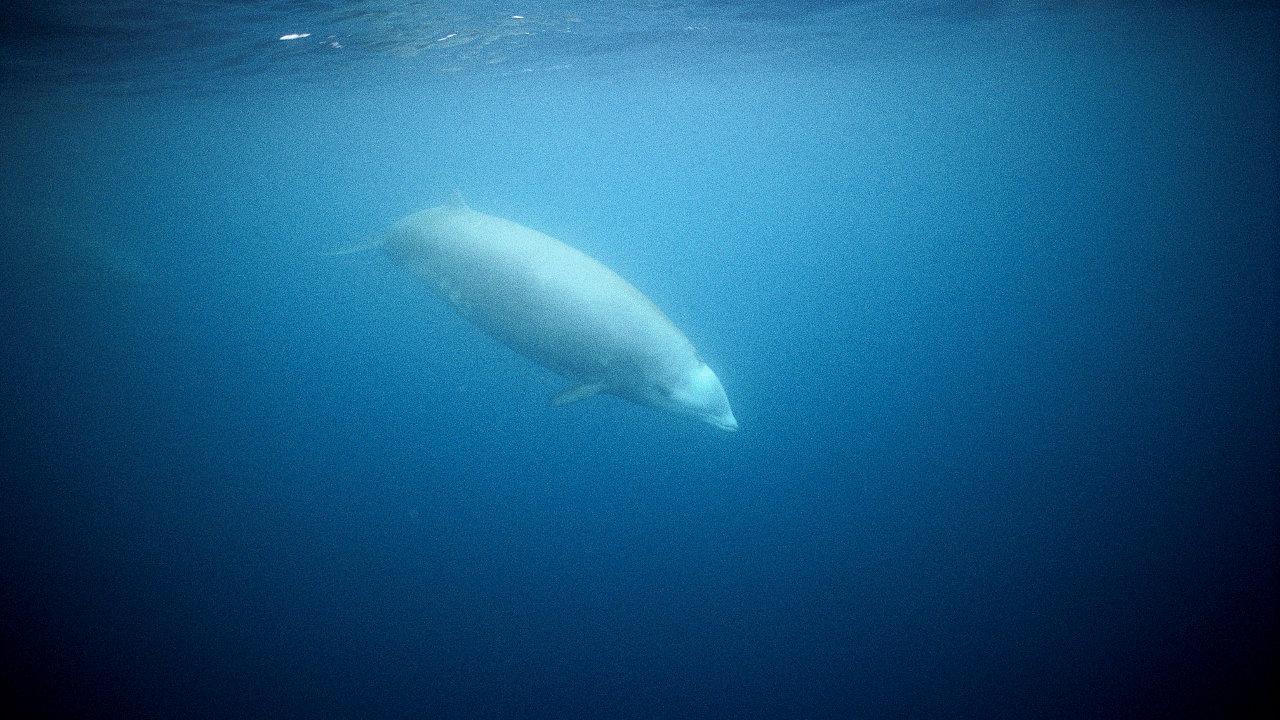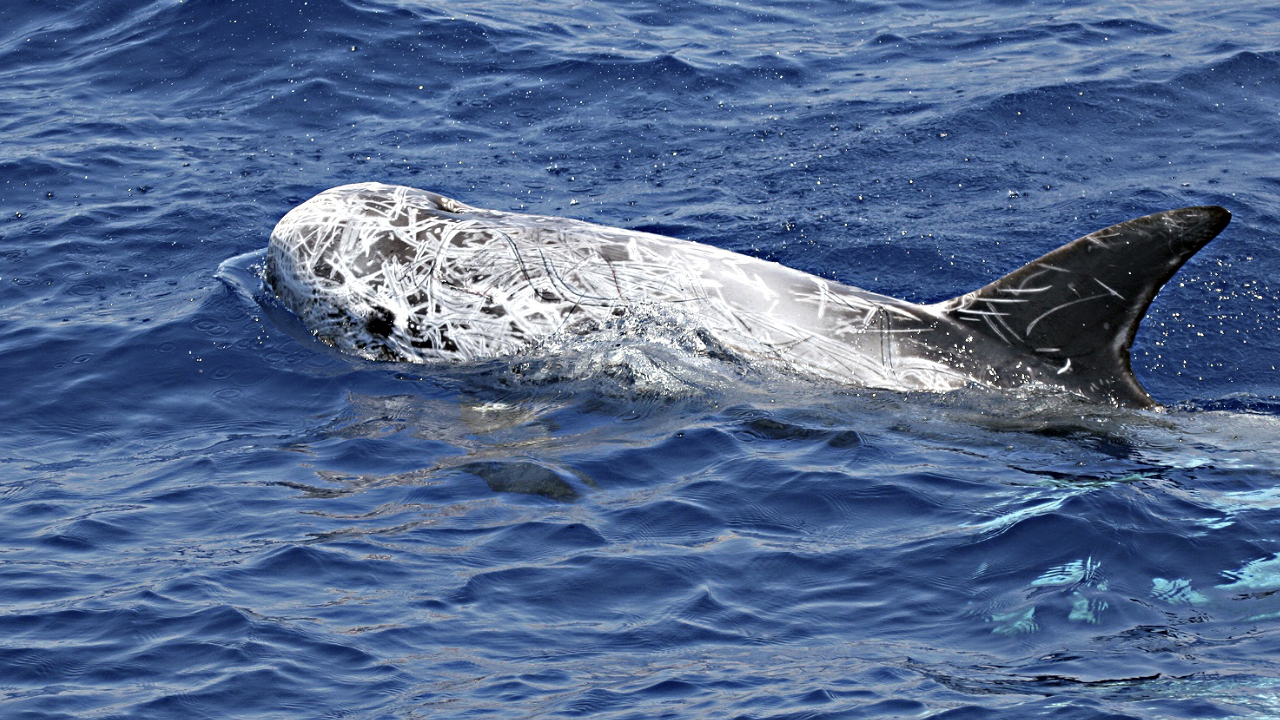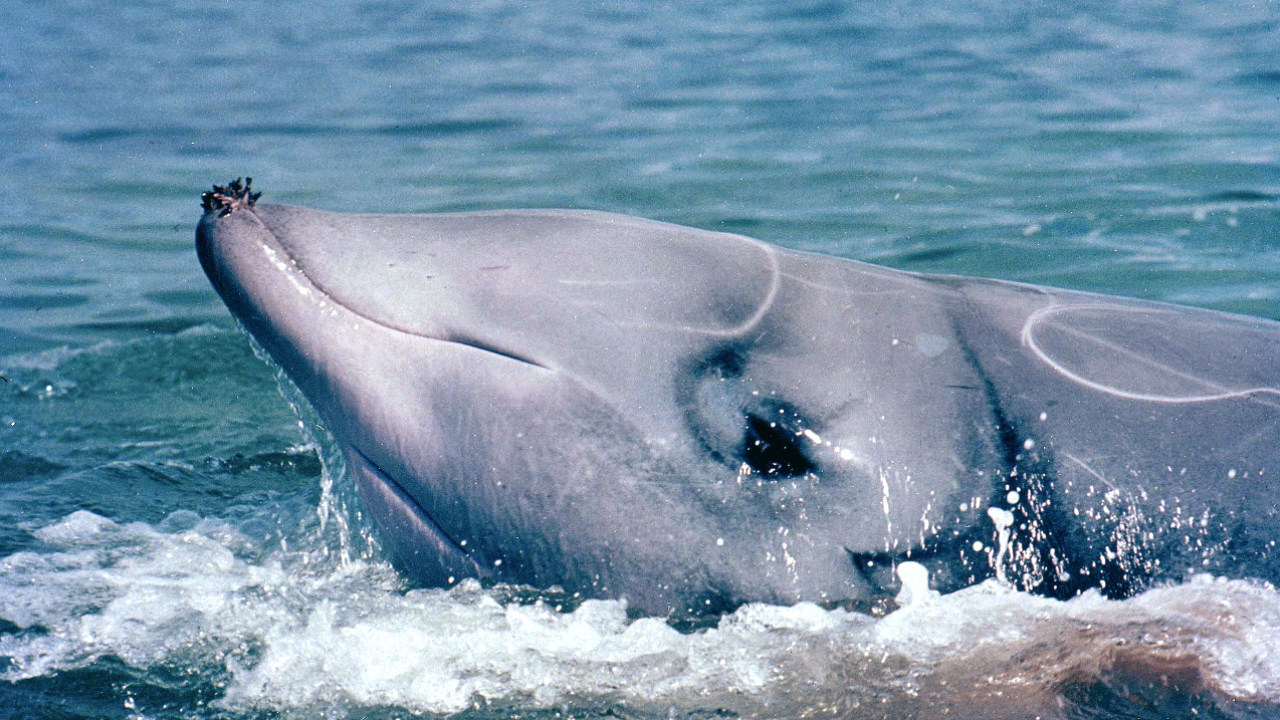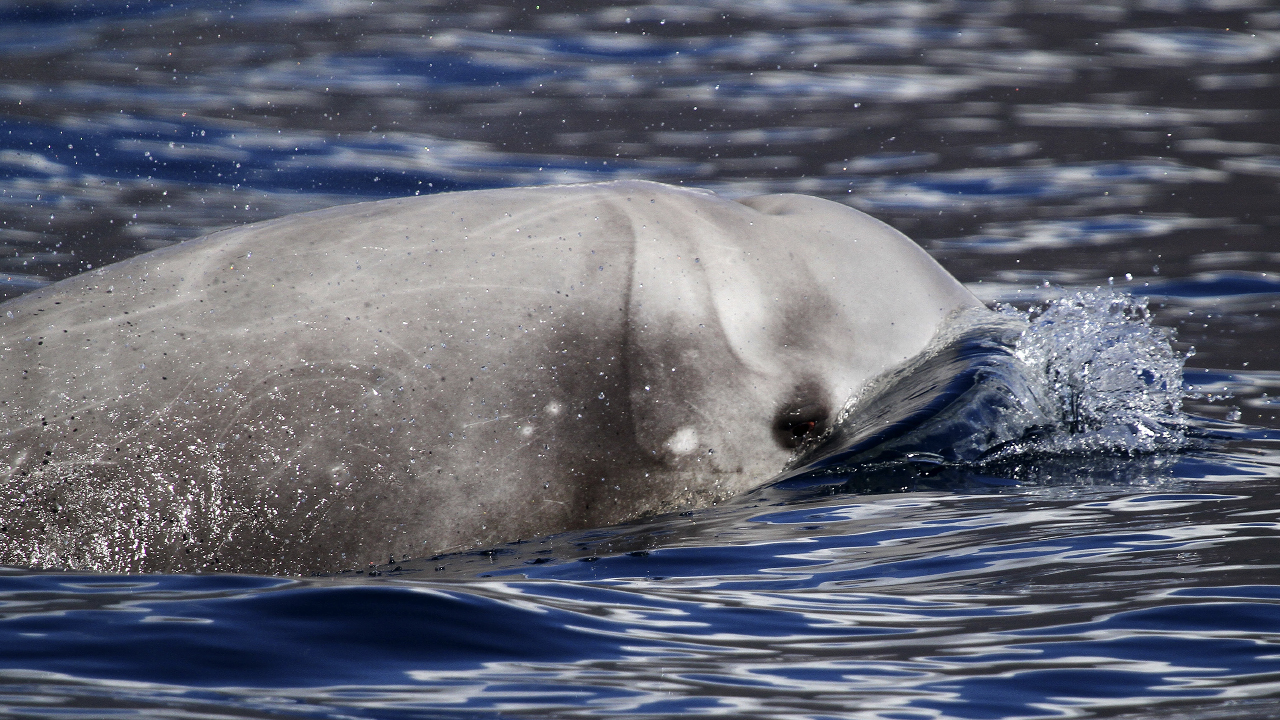Cuvier’s beaked whale
Ziphius cavirostris
-
 The Cuvier’s beaked whale is a rotund- bodied animal that can measure up to seven metres in length. It has a slightly bulbous melon, no prominent beak and a small curved dorsal fin. Oval scars caused by parasites or predators are common in older animals, whilst scratches and tooth rakes are seen on adult males, having been inflicted by other males.
The Cuvier’s beaked whale is a rotund- bodied animal that can measure up to seven metres in length. It has a slightly bulbous melon, no prominent beak and a small curved dorsal fin. Oval scars caused by parasites or predators are common in older animals, whilst scratches and tooth rakes are seen on adult males, having been inflicted by other males. -
 The species can be found in both the Northern and Southern Hemispheres and ranges from the Equator to cold frigid areas. The Cuvier’s beaked whale is usually elusive and inconspicuous at the surface, although there are several reports of breaching animals in some parts of the world.
The species can be found in both the Northern and Southern Hemispheres and ranges from the Equator to cold frigid areas. The Cuvier’s beaked whale is usually elusive and inconspicuous at the surface, although there are several reports of breaching animals in some parts of the world. -
 The Cuvier’s beaked whale is one of the deepest-diving mammals in the world; only the sperm whale might reach similar depths. The maximum recorded depth was 3000 m, and the longest dive lasted for 140 minutes.
The Cuvier’s beaked whale is one of the deepest-diving mammals in the world; only the sperm whale might reach similar depths. The maximum recorded depth was 3000 m, and the longest dive lasted for 140 minutes. -
 As with other beaked whales, the Cuvier’s beaked whale lacks teeth to catch its prey and the teeth of the males are only used in fights with other males. Instead, the whales use suction to hoover up their prey. To increase suction, the whale uses its mobile and strong tongue. It also has a pair of throat grooves that allows the whale to expand its throat, thereby increasing the suction even further.
As with other beaked whales, the Cuvier’s beaked whale lacks teeth to catch its prey and the teeth of the males are only used in fights with other males. Instead, the whales use suction to hoover up their prey. To increase suction, the whale uses its mobile and strong tongue. It also has a pair of throat grooves that allows the whale to expand its throat, thereby increasing the suction even further. -
 There are no global population estimates for the Cuvier’s beaked whale, although it is generally thought to be one of the most abundant of the beaked whale species. The main threats include the accumulation of toxic pollutants in whale tissue and organs, entanglement in fishing nets and marine litter, and noise disturbance.
There are no global population estimates for the Cuvier’s beaked whale, although it is generally thought to be one of the most abundant of the beaked whale species. The main threats include the accumulation of toxic pollutants in whale tissue and organs, entanglement in fishing nets and marine litter, and noise disturbance.
